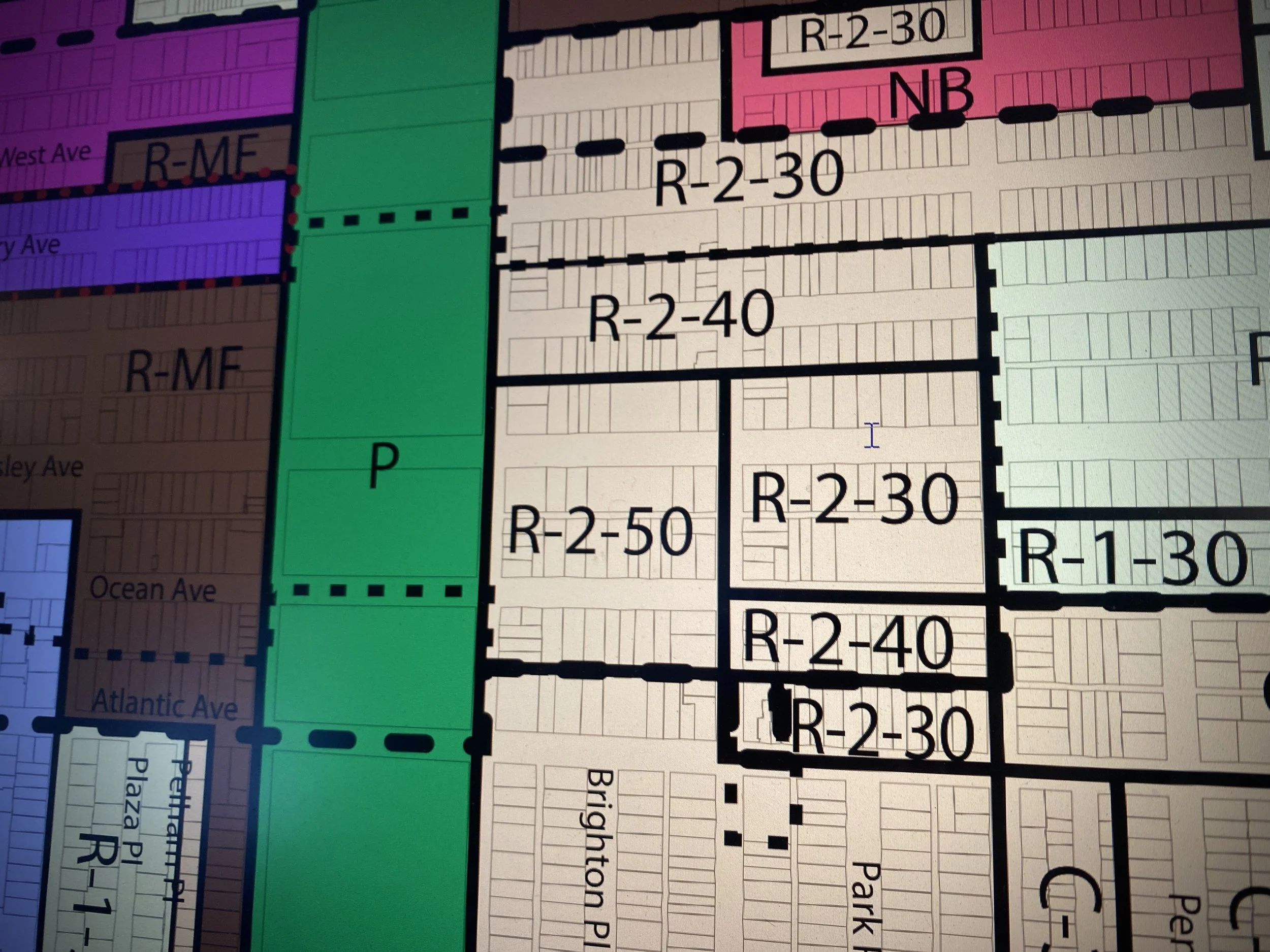What is quiet upzoning
What should be a mostly single-family island (R-1) has been quietly upzoned to R-2 (duplex) and R-MF (multi-family) over the years.
How “Quiet Upzoning” Is Reshaping Ocean City and What We Can Do About It
By Sne Avichal
What if your street was transformed—more traffic, more rental units, fewer historic homes—without a single vote, and without you even realizing it was happening?
That’s the reality in Ocean City today. Our future is being shaped by decisions most people never hear about, at zoning meetings, planning board hearings, and variance requests.
It’s happening through something called quiet upzoning, and it’s changing the character of our neighborhoods, one decision at a time.
What Is Quiet Upzoning?
At its simplest, quiet upzoning is when the rules about what can be built in a neighborhood change without much public attention. Sometimes, new zoning laws are passed quietly. But more often, the changes come through older decisions: rewrites made years ago, or shifts in how existing laws are applied.
The result is bigger, denser, more profitable development on streets that once had protections. And most of the time, neighbors have no idea until the foundation is poured and the old home is gone.
We’re seeing it happen all over Ocean City.
The Rules Changed. Most People Missed It.
In many neighborhoods, zoning has already changed from R-1 (single-family homes) to R-2 (duplexes). That opened the door for developers to replace older homes with two-unit rentals. No hearing required, no special permission needed. And that’s exactly what’s happening.
Homes are being sold privately, off-market, to developers offering cash. Some never even make it to a public listing. The new buildings are designed for income, not character. They arrive quickly and quietly, and by the time they’re up, the opportunity for input has passed.
Even when residents show up and speak out, decisions often favor the developer. At Glen Cove, neighbors voiced clear concerns about a commercial marina being allowed in a residential neighborhood. But the zoning board decided the project didn’t require a variance at all, choosing to reinterpret the rules in a way that allowed it to proceed, saying it didn’t count because the docks float. While it’s true that water-side uses are the purview of the DEP, the board ignored their own mandate to weigh in on the land-side effects, namely impacts on traffic and parking.
That decision set a precedent for what’s now possible along our waterfront, as other landowners can point to it as a model.
The Cost of Improvising Without a Plan
Quiet upzoning isn’t just impacting waterfront homes and duplexes. Ocean City’s Planning Board is approving mixed-use projects (housing over storefronts) on Asbury Avenue and West Avenue.
Done well, mixed-use development can be community-friendly. But in Ocean City, it’s happening without independent traffic studies, without sewer or utility assessments, and without any clear plan for how these changes affect small businesses, parking, or quality of life.
If landlords can now make their profits from upstairs condos, what’s the incentive to keep ground-floor retail rents affordable? What happens to the charm and economic draw of our downtown when quirky local shops get replaced by empty storefronts or luxury units that sit dark in the off-season?
We don’t have answers, because we don’t have a plan.
Instead of thoughtful, consistent development, we’re getting approval by improvisation, a patchwork of decisions made behind closed doors or buried in planning agendas most residents never see.
Our Historic District Is at Risk, Too
Even Ocean City’s Historic District is vulnerable. Most of its homes sit on lots where multi-family buildings are now allowed. Historic preservation rules are meant to protect these properties, but if those protections are ignored or softened by the city, the underlying zoning takes over. Developers can then demolish historic homes and build larger, boxier duplexes or four-plexes in their place, losing the very streetside charm that makes Ocean City special
No one needs to repeal the historic overlay to weaken it. All it takes is looking the other way. And once they’re gone, they’re gone for good.
So What Can We Do?
The good news is: quiet upzoning only works when the public isn’t paying attention.
The fewer questions asked, the easier it is to push forward projects that reshape neighborhoods without a clear public benefit.
But the opposite is also true. The more engaged the public becomes, the harder it is for quiet changes to go unnoticed.
Residents have more power than they think. Every variance hearing, every zoning vote, every planning board meeting is a chance to shape the future of our town. A smart, fair, forward-looking Master Plan isn’t just good policy, it’s how we preserve what makes Ocean City worth caring about.
If we want a future that reflects the values of the people who live here—not just the interests of those who profit from change—we need to stay involved. Show up to Planning Board and Zoning Board meetings. Ask questions when developers seek approvals. Push for a Master Plan process that looks at the big picture. Join local advocacy groups such as Ocean City 2050, or groups that focus on historic preservation such as Friends of OCNJ History and Culture (full disclosure, I’m active in both groups, and we’d welcome additional input and participation).
Ocean City deserves a future that works for everyone, not just what’s easiest or most profitable for developers. We still have time to protect what makes our town special, while still welcoming progress and thoughtful growth. But only if we speak up.
